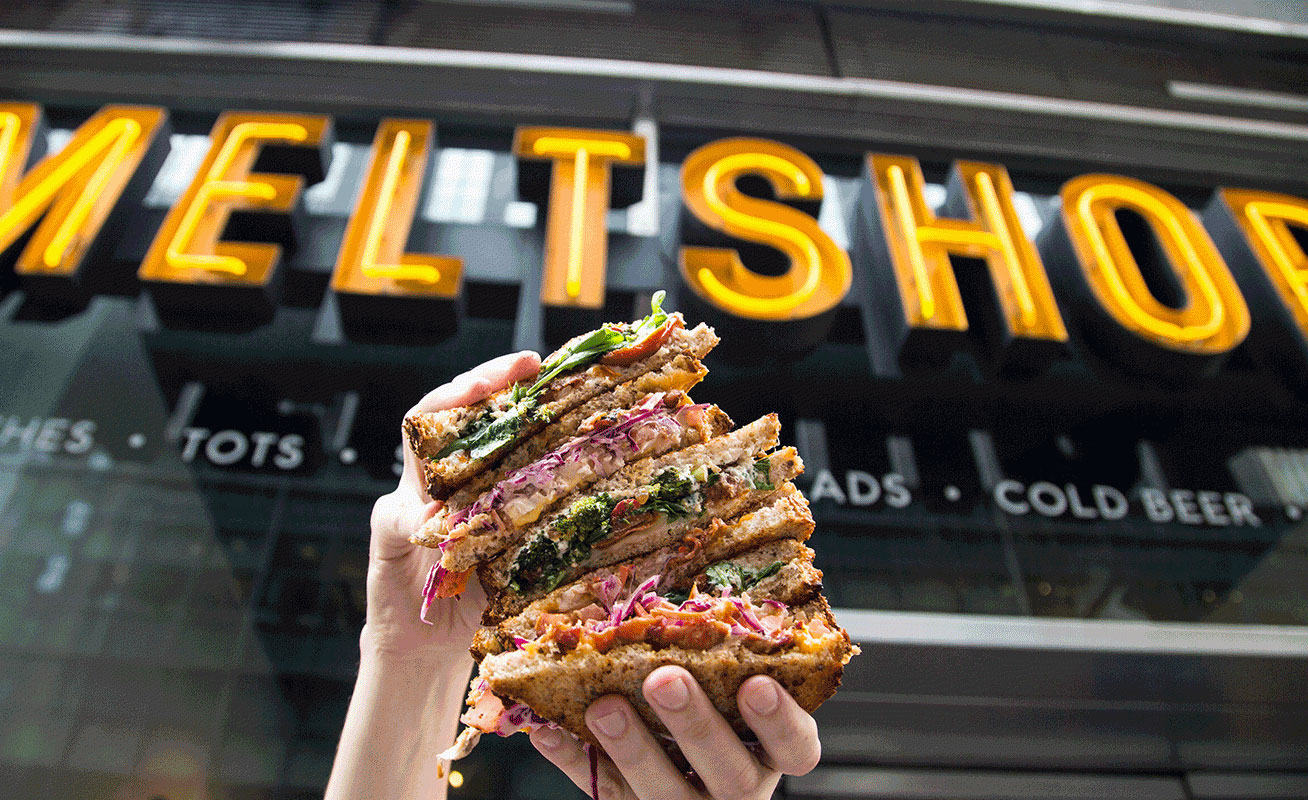“The mall is dying.” It’s a statement we’ve heard more often in recent years and the bankruptcy of Sears isn’t helping the matter. Over the past several years, malls and department stores have struggled to maintain a consistent flow of customers and sales have suffered. However, that statement is a gross exaggeration and mall sales rebounded nicely in 2018 as developers are reimagining the mall landscape. In fact, according to MasterCard, 2018 sales were up 7.9 percent year over year, proving to be the best since 2010. The addition of new entertainment, restaurant concepts and smart technology are helping to reshape the mall experience and retail and food court sales are starting to trend upwards.
Since opening Melt Shop as a walk-up counter in 2011, our brand has expanded to 14 restaurants and has become the pioneer of the Melted Sandwich Movement. While we continue to expand in traditional locations, we have started to focus on establishing our footprint in class-A malls across the Northeast. Despite the differences in the footprint of mall restaurants from standard units, the same customization, innovation and quality customer service remain essential to delivering a top-notch experience for our guests.
Here are a few of the reasons why Melt Shop has included the “right” malls as part of our strategic expansion strategy and why other brands should consider the same.
Exposure to a Broader Group of Customers
Walk around a mall and what do you notice? Families, groups of friends and couples searching for the next store or spot to eat. With a wide variety of department stores and niche retailers, malls attract a range of demographics, which makes these nontraditional locations a perfect fit for restaurant brands that connect with people of all ages. While foot traffic has been steady in class-A malls, many still elect to shop online, so with that consumer behavioral change, developers are searching for innovative concepts to increase traffic. With a clear plan and innovative brand strategy, you’ll appeal well to a broad customer base inside the right malls across America.
Changing Mall Landscape
Online shopping may be surging in popularity, but statistics prove that millions of Americans are still opting for in-store shopping experiences. Retailers are scratching old plans and reviving their presence within malls in a new, creative and engaging manner that’ll make consumers want to spend their free time shopping, eating or playing.
As more malls transform into entertainment centers, foot traffic will continue to increase, creating an ideal scenario for innovative restaurant brands. Experts suggest that food is actually becoming the main component of the mall evolution and that trend is expected to continue. The claim that ‘malls are dying’ is greatly exaggerated; instead, developers are seeing this as an opportunity to do more placemaking with food as the epicenter. With the landscape rapidly changing in this direction, now is the ideal time for restaurant brands to consider entering the mall segment, as the price of admission may increase drastically for operators.
Lower-risk, High-reward
With the smaller footprint, opening in malls is often less expensive than opening a standalone location. Partnering with a reputable commercial real estate company makes identifying locations easier and can add valuable experience to those entering the segment for the first time. Additionally, the return on investment can be huge.
It’s true that expanding anywhere will present unique challenges, but I’m a strong proponent of advancing in the right mall locations for the right concept. This might seem like a contrarian growth strategy, but countless mall investors are heavily reinvesting their capital back into properties to enhance the experience and renting to premium retail and food brands. Consumer trends have weighed heavily into the changing mall landscape and as part of a larger portfolio strategy, restaurant brands should begin to search out opportunities in malls that are embracing the evolution.












